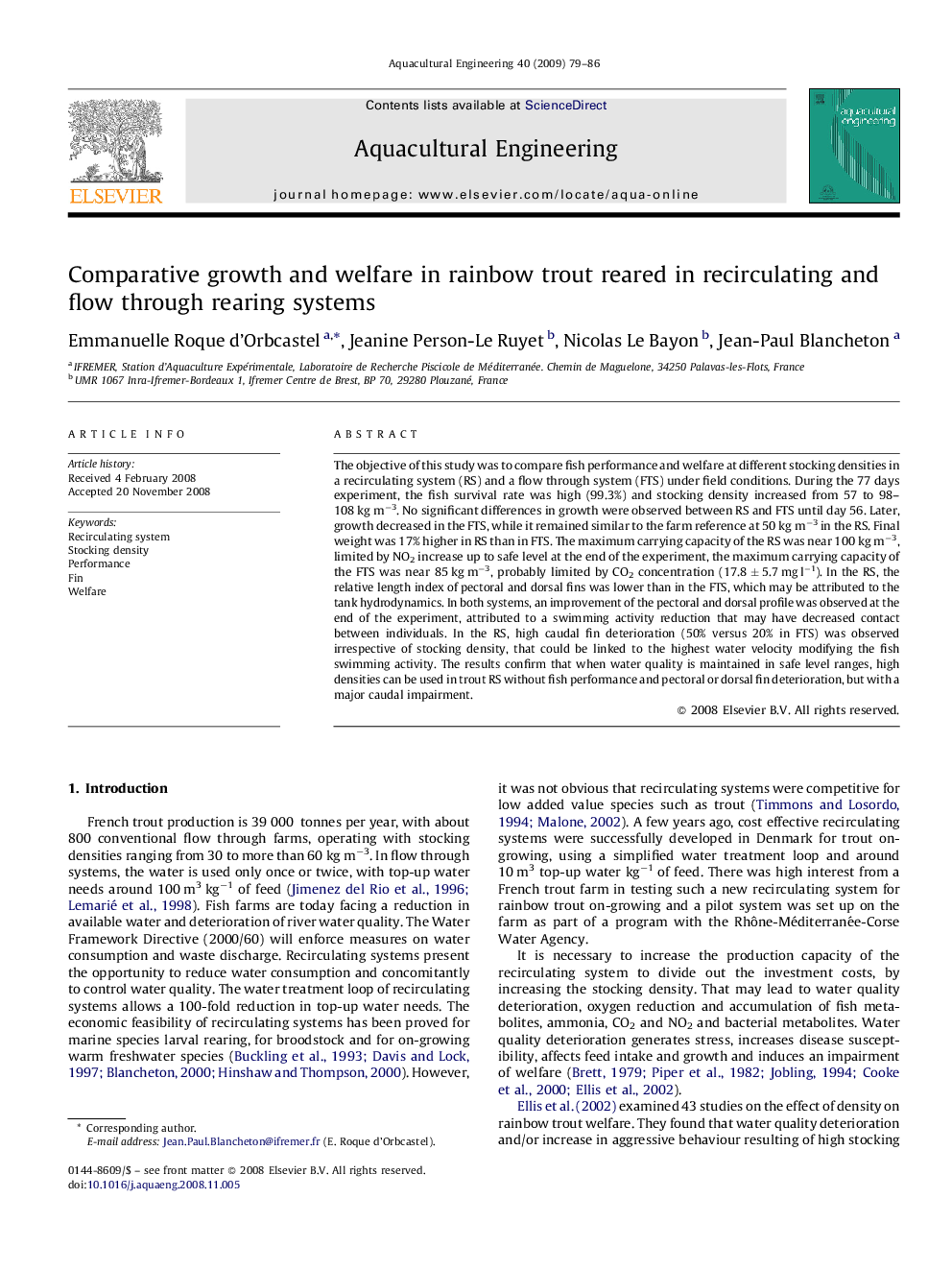| Article ID | Journal | Published Year | Pages | File Type |
|---|---|---|---|---|
| 6381530 | Aquacultural Engineering | 2009 | 8 Pages |
Abstract
The objective of this study was to compare fish performance and welfare at different stocking densities in a recirculating system (RS) and a flow through system (FTS) under field conditions. During the 77 days experiment, the fish survival rate was high (99.3%) and stocking density increased from 57 to 98-108 kg mâ3. No significant differences in growth were observed between RS and FTS until day 56. Later, growth decreased in the FTS, while it remained similar to the farm reference at 50 kg mâ3 in the RS. Final weight was 17% higher in RS than in FTS. The maximum carrying capacity of the RS was near 100 kg mâ3, limited by NO2 increase up to safe level at the end of the experiment, the maximum carrying capacity of the FTS was near 85 kg mâ3, probably limited by CO2 concentration (17.8 ± 5.7 mg lâ1). In the RS, the relative length index of pectoral and dorsal fins was lower than in the FTS, which may be attributed to the tank hydrodynamics. In both systems, an improvement of the pectoral and dorsal profile was observed at the end of the experiment, attributed to a swimming activity reduction that may have decreased contact between individuals. In the RS, high caudal fin deterioration (50% versus 20% in FTS) was observed irrespective of stocking density, that could be linked to the highest water velocity modifying the fish swimming activity. The results confirm that when water quality is maintained in safe level ranges, high densities can be used in trout RS without fish performance and pectoral or dorsal fin deterioration, but with a major caudal impairment.
Related Topics
Life Sciences
Agricultural and Biological Sciences
Aquatic Science
Authors
Emmanuelle Roque d'Orbcastel, Jeanine Person-Le Ruyet, Nicolas Le Bayon, Jean-Paul Blancheton,
